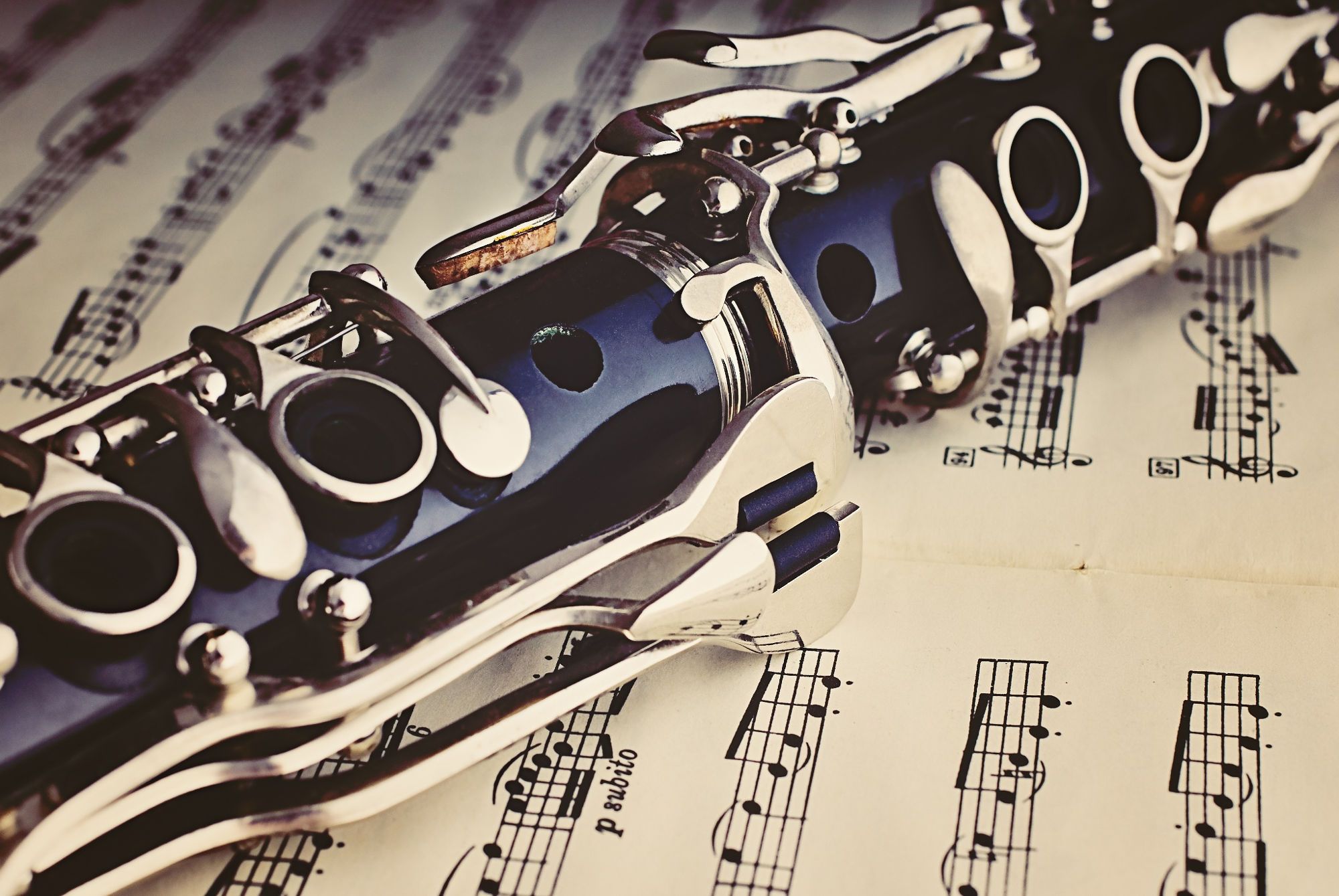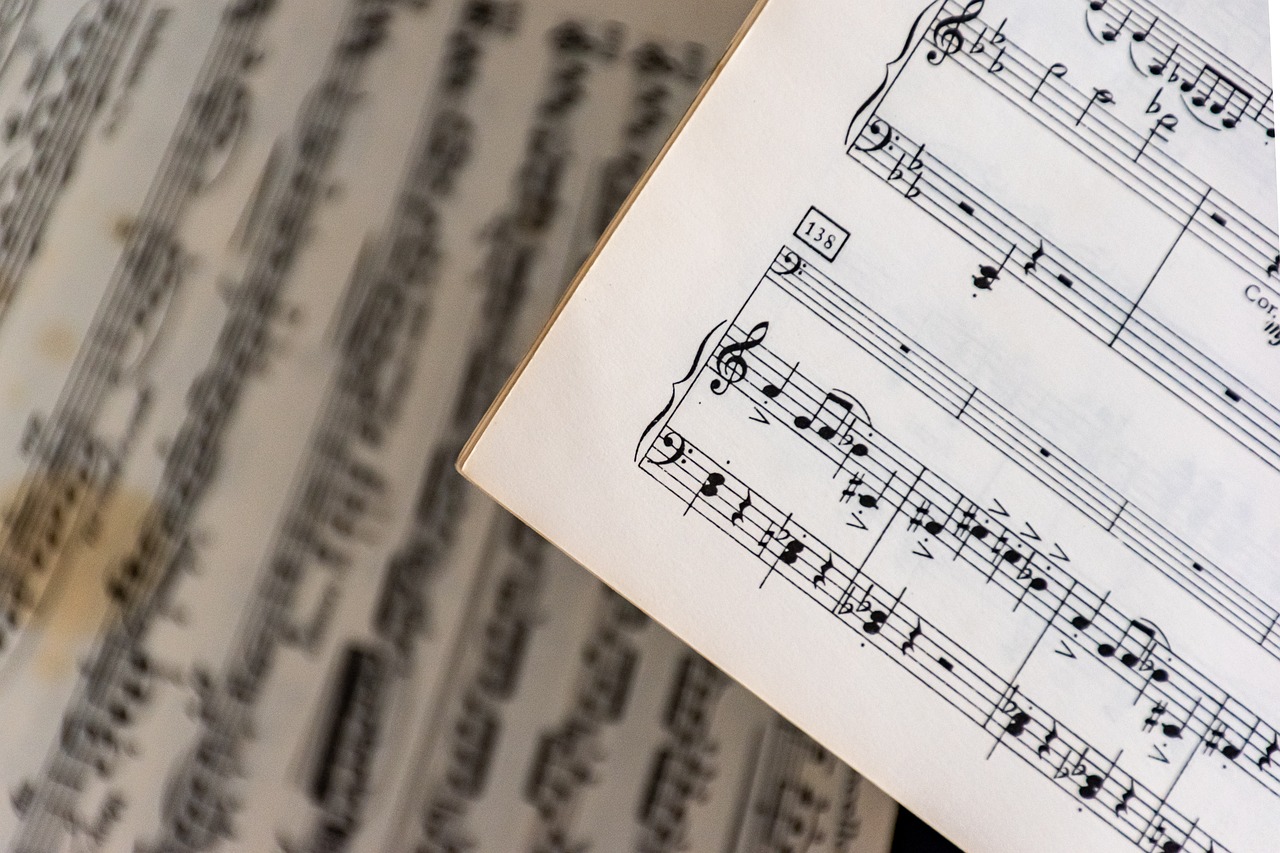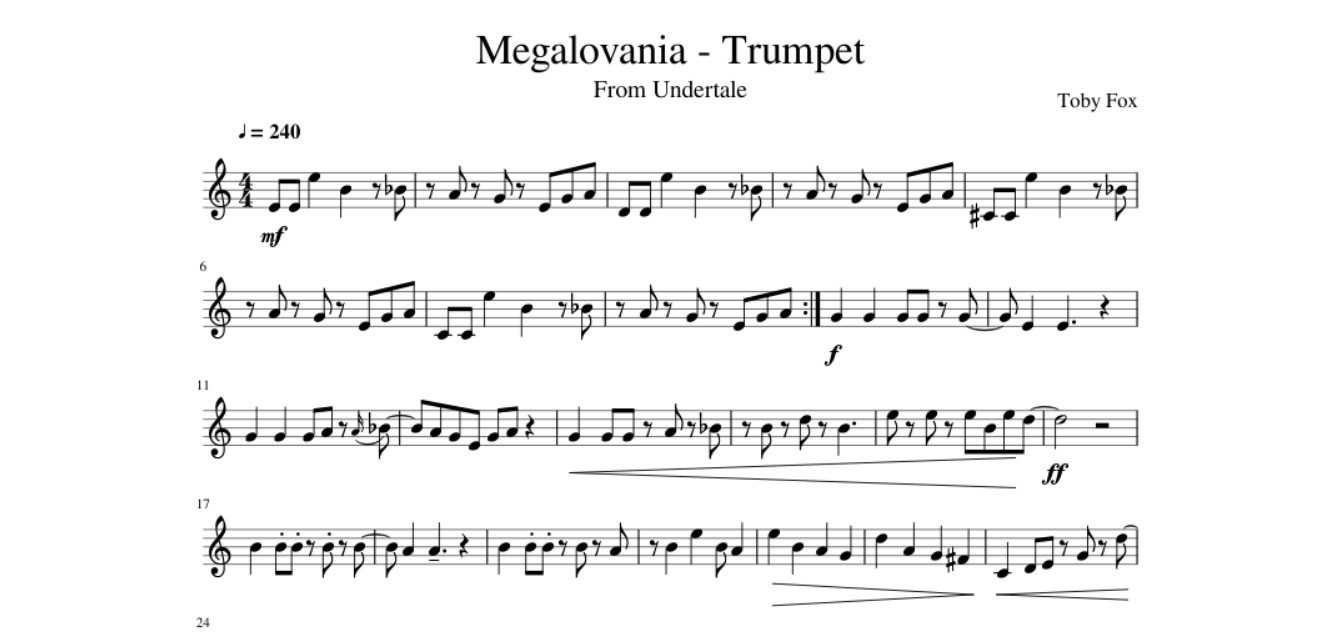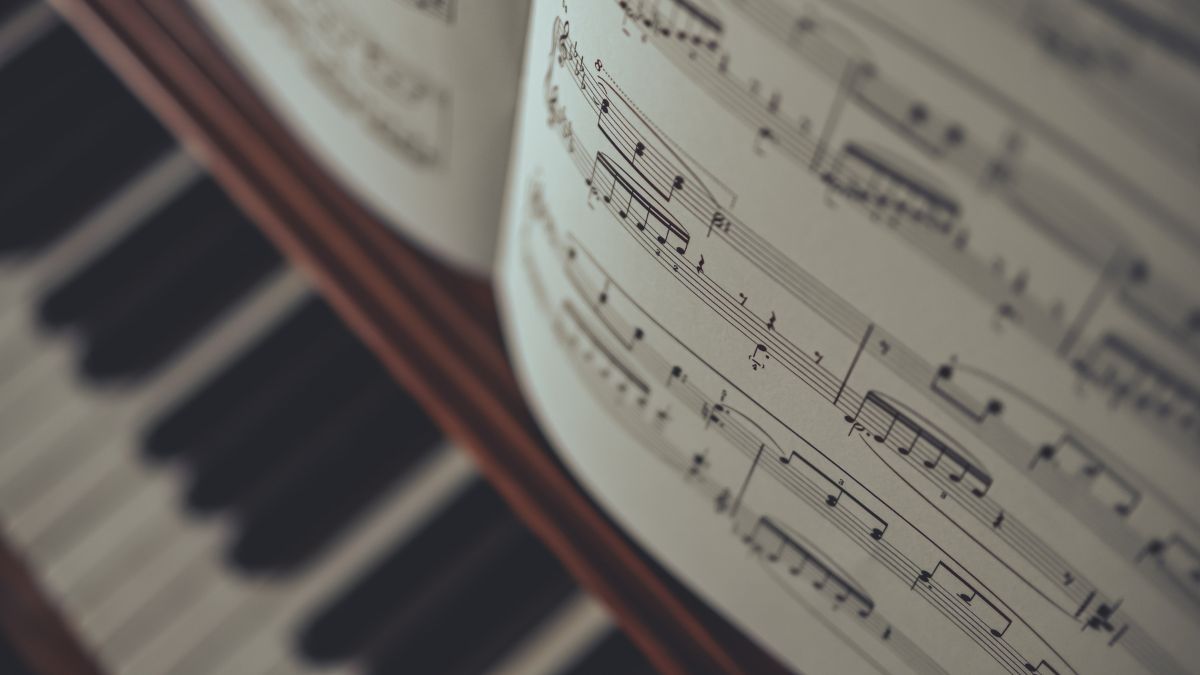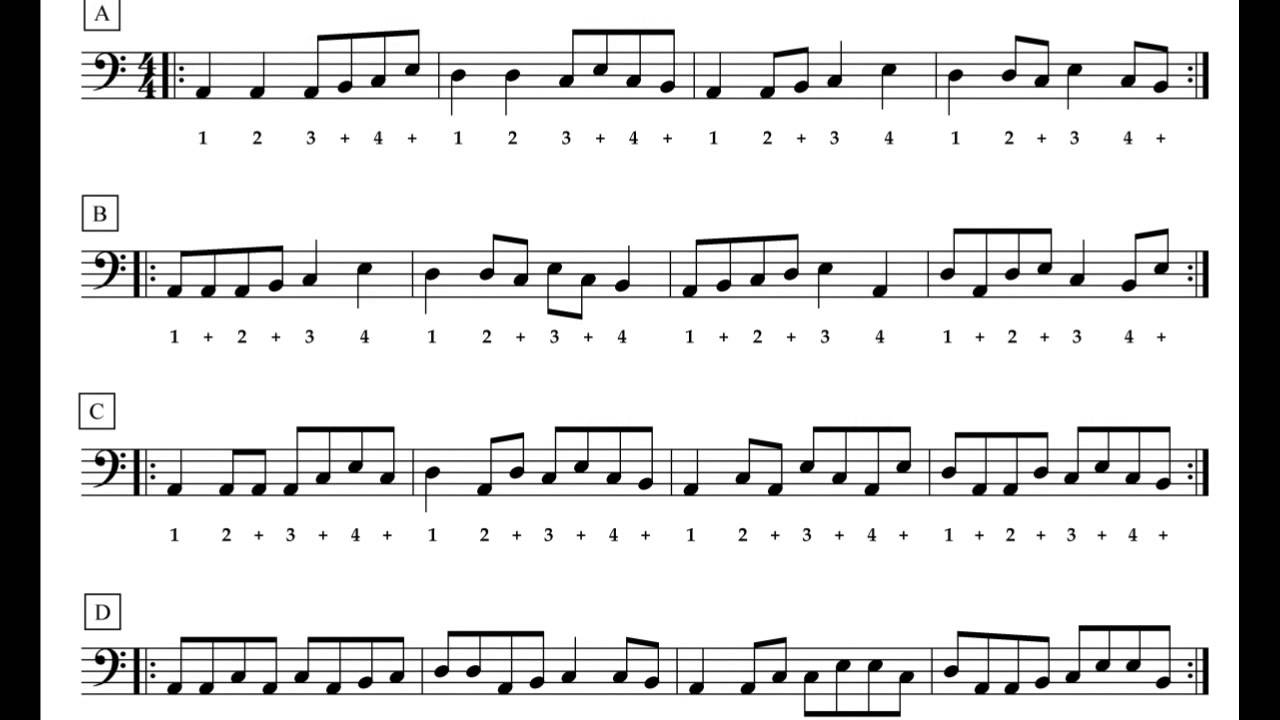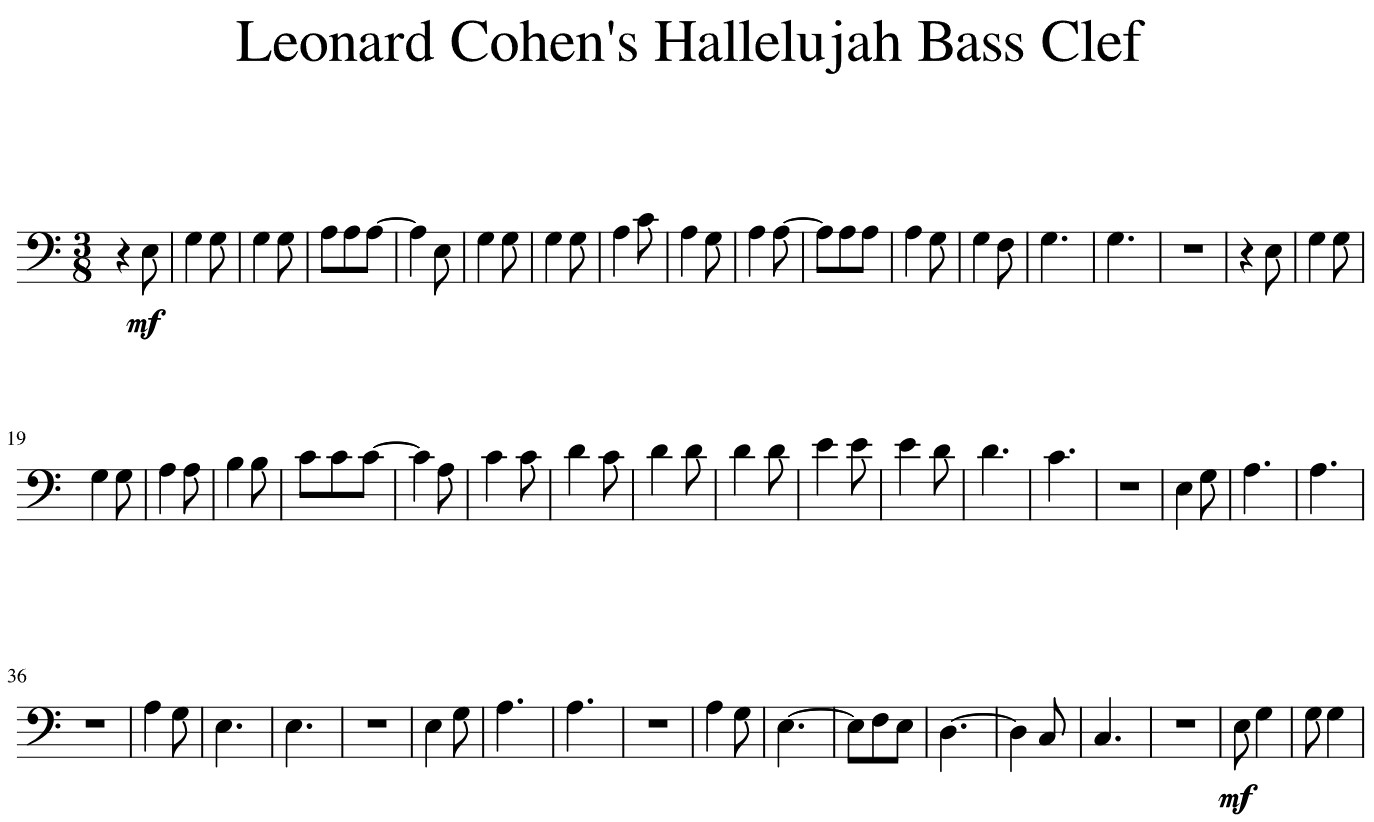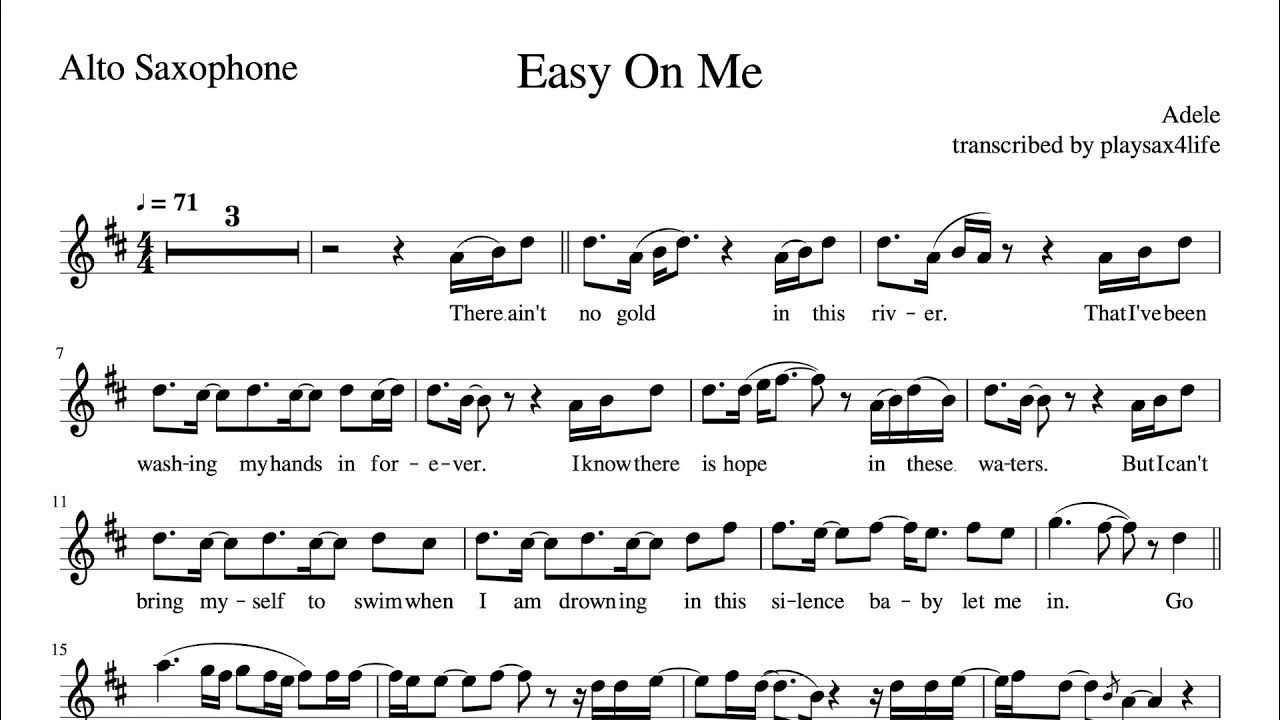Home>Production & Technology>Sheet Music>How To Read Sheet Music Rhythm Notation


Sheet Music
How To Read Sheet Music Rhythm Notation
Modified: January 22, 2024
Learn how to read sheet music rhythm notation and improve your music skills. Discover the secrets of sheet music and unlock a world of musical possibilities.
(Many of the links in this article redirect to a specific reviewed product. Your purchase of these products through affiliate links helps to generate commission for AudioLover.com, at no extra cost. Learn more)
Table of Contents
- Introduction
- Understanding Rhythm Notation
- Basic Elements of Rhythm Notation
- Reading Note Durations
- Time Signatures
- Rests in Sheet Music
- Note Values and their Symbols
- Dotted Notes and Ties
- Grouping of Notes and Triplets
- Syncopation
- Counting Rhythms and Subdivisions
- Practical Exercises for Reading Rhythm Notation
- Conclusion
Introduction
Sheet music is a written form of musical notation that allows musicians to read and interpret music. It serves as a guide, providing information about the pitch, duration, and rhythm of the musical notes. One of the essential elements of sheet music is rhythm notation, which represents the timing and duration of each note.
Understanding rhythm notation is crucial for musicians of all levels, whether you’re a beginner learning to play a musical instrument or an experienced musician looking to expand your repertoire. By mastering rhythm notation, you gain the ability to accurately interpret and play music, bringing it to life.
In this article, we will explore the basics of reading rhythm notation in sheet music. We will delve into the various elements of rhythm notation, such as note durations, time signatures, rests, and note values. Additionally, we will discuss more advanced concepts, including dotted notes, ties, syncopation, and counting rhythms.
By the end of this article, you will have a solid foundation in reading rhythm notation, enabling you to approach sheet music with confidence and precision. So, whether you’re a pianist, guitarist, vocalist, or any other musician, let’s dive into the world of sheet music rhythm notation and unlock the magic of musical expression!
Understanding Rhythm Notation
Rhythm notation is the system used in sheet music to represent the timing and duration of musical notes. It allows musicians to accurately read and interpret the rhythm of a piece, ensuring that each note is played or sung for the correct amount of time. Understanding rhythm notation is essential for musicians as it provides the framework for creating rhythmic patterns, emphasizing accents, and maintaining a steady tempo.
At its core, rhythm notation consists of various elements that work together to communicate the rhythm of a musical piece. These elements include note durations, time signatures, rests, note values, dotted notes, ties, and the grouping of notes.
Note durations represent the length or duration of a musical note. Each note duration is assigned a specific symbol that indicates its length relative to other notes. These symbols include whole notes, half notes, quarter notes, eighth notes, and so on. By understanding the relationship between these note durations, musicians can accurately read and perform the rhythm of a piece.
Time signatures provide information about the organization of beats within a measure. They consist of two numbers, one written above the other. The top number indicates the number of beats in a measure, while the bottom number represents the note value that receives one beat. For example, in a 4/4 time signature, there are four beats in a measure, and the quarter note receives one beat.
Rests, denoted by symbols, indicate periods of silence in the music. Rests are crucial as they allow musicians to accurately time their entrances and pauses in a piece. Similar to note durations, rests have different symbols corresponding to their lengths, such as whole rests, half rests, quarter rests, and so on.
Note values represent the relationship between note durations. They determine how long a note is held relative to other notes. For example, a whole note is held for the duration of four beats (in common time), while a half note is held for two beats, a quarter note for one beat, and so on.
Dotted notes and ties are used to extend the duration of a note. A dot placed next to a note adds half of its value to the original duration. Ties, on the other hand, connect two notes of the same pitch, indicating that they should be held for the combined duration of both notes.
Grouping of notes refers to the organization of notes into patterns or subdivisions. These subdivisions can be represented by triplet symbols, indicating that three notes should be played within the space of two regular notes, creating a polyrhythmic effect.
Syncopation is a concept in rhythm notation that emphasizes offbeat rhythms, creating a sense of tension and rhythmic interest. It involves accentuating notes that fall on weak beats or between beats, adding a unique flavor to the music.
In the next sections, we will explore each of these elements in more detail, providing examples and practical exercises to help you grasp rhythm notation more effectively.
Basic Elements of Rhythm Notation
To read and understand rhythm notation in sheet music, it is important to familiarize yourself with the basic elements that make up this system. These elements include note durations, time signatures, rests, and note values. Let’s take a closer look at each of these elements:
Note Durations: Note durations indicate the length or duration of a musical note. Each note duration is represented by a specific symbol. For example, a whole note is represented by an open oval shape, while a half note is represented by the same oval shape with a stem. The duration of each note is relative to the other notes in the piece.
Time Signatures: Time signatures provide information about the rhythmic structure of a musical piece. They consist of two numbers stacked vertically. The top number represents the number of beats in each measure, while the bottom number represents the note value that receives one beat. For example, a 4/4 time signature indicates four beats per measure, with the quarter note receiving one beat.
Rests: Rests indicate periods of silence in the music. They are represented by symbols that correspond to note durations. Rests are essential as they indicate when a musician should pause or not play any notes. For example, a whole rest indicates a complete measure of silence, while a quarter rest indicates a pause for one beat.
Note Values: Note values determine the length of a note relative to other notes. They indicate how long a note should be held. Note values are represented by different symbols. For instance, a whole note is held for four beats (in common time), a half note is held for two beats, a quarter note is held for one beat, and so on. Understanding note values is crucial for maintaining a steady rhythm.
These basic elements of rhythm notation provide the foundation for reading and interpreting the rhythm of a musical piece. By understanding note durations, time signatures, rests, and note values, you will be able to navigate through sheet music with confidence and accuracy. In the following sections, we will explore these elements in more detail, providing examples and practical exercises to solidify your understanding of rhythm notation.
Reading Note Durations
One of the fundamental aspects of rhythm notation is understanding note durations. Note durations indicate the length or duration of a musical note, and each duration is represented by a specific symbol. By mastering note durations, you will be able to accurately read and interpret the rhythm of a piece of sheet music.
The most commonly used note durations include whole notes, half notes, quarter notes, eighth notes, and sixteenth notes. Each note duration has a unique symbol and represents a specific length of time. For example, a whole note is an open oval shape, indicating the longest duration, while a sixteenth note is represented by a filled-in oval shape with two flags or beams, indicating the shortest duration.
When reading note durations, it is important to understand their relationships and how they relate to one another in terms of length. For instance, a whole note is equal to the length of two half notes, four quarter notes, eight eighth notes, or sixteen sixteenth notes. This understanding allows you to accurately gauge the duration of each note and maintain the desired rhythm.
Note durations are also influenced by the time signature of a musical piece. In a time signature such as 4/4, which is commonly known as “common time,” the quarter note typically receives one beat. This means that a whole note would last for four beats, a half note for two beats, an eighth note for half a beat, and so on. By recognizing the time signature and the note values within it, you can navigate through the rhythm of the music with precision.
When reading sheet music, note durations are typically placed on the staff, either on or between the lines. The presence of stems, flags, and beams can also provide additional information about the durations of the notes. Stems are vertical lines attached to the notehead, indicating the pitch of the note, while flags and beams are diagonal lines that connect multiple notes, indicating their durations.
Practicing exercises that focus on note durations will greatly improve your ability to read and interpret rhythm notation. Start by clapping or tapping along to different rhythmic patterns, focusing on the duration of each note. You can also play scales and simple melodies while paying attention to the length of each note. The more you practice, the more natural and intuitive reading note durations will become.
By developing a strong understanding of note durations and their symbols, you will be well-equipped to confidently read and play sheet music, accurately bringing the rhythm of the music to life.
Time Signatures
Time signatures are an essential component of rhythm notation in sheet music. They provide information about the organization and structure of beats within a musical piece. By understanding time signatures, musicians can accurately interpret the rhythm and maintain a steady tempo while playing.
A time signature is represented by two numbers stacked vertically. The top number indicates the number of beats in each measure, while the bottom number represents the note value that receives one beat. The top number can be any positive integer, while the bottom number is usually a power of two, such as 2, 4, 8, or 16.
One of the most common time signatures is 4/4, known as “common time.” In this time signature, there are four beats in each measure, and the quarter note receives one beat. This means that a measure of 4/4 time can be filled with four quarter notes, or their equivalent in other note durations.
Other common time signatures include 3/4, also known as “waltz time,” which has three beats in each measure, with the quarter note still receiving one beat. This time signature is commonly associated with a waltz rhythm. Similarly, 2/4 time has two beats in each measure, with the quarter note receiving one beat, and is often used in march music.
Time signatures can also include compound meters, which have a top number that is a multiple of three. For example, 6/8 time consists of six beats in each measure, with the eighth note receiving one beat. This time signature is often associated with a compound duple meter and has a strong emphasis on the first and fourth beats.
When reading sheet music, the time signature is typically placed at the beginning of the staff, immediately following the clef sign. It provides a clear indication of the rhythmic structure of the piece and helps musicians maintain a consistent tempo and sense of timing.
It is important to note that the time signature may change throughout a musical piece, indicating a shift in the rhythmic structure. These changes can add variety and complexity to the music, requiring the musician to adapt and adjust their playing accordingly.
Understanding time signatures allows musicians to approach sheet music with confidence and accuracy. By recognizing the number of beats per measure and the corresponding note value, musicians can effectively navigate through the rhythm of the music, ensuring a cohesive and synchronized performance.
Rests in Sheet Music
In the language of sheet music, rests are symbols that represent periods of silence or pauses within a musical piece. They are an essential aspect of rhythm notation, providing musicians with a clear indication of when to withhold playing or singing.
Rests are similar to note durations in that they have different symbols to represent various lengths of silence. The most commonly used rests include whole rests, half rests, quarter rests, eighth rests, and sixteenth rests. Each rest symbol corresponds to a specific duration of silence in relation to the time signature and note values used in the piece.
Whole rests, indicated by a thick horizontal line that extends below the line of the staff, signify complete measures of silence. They are typically found in music where the entire ensemble or performer is required to pause for an entire measure.
Half rests, shown as a vertical rectangle placed on the line or space of the middle line of the staff, indicate a pause lasting for half a measure. Similarly, quarter rests, represented by a vertical squiggly line attached to the middle line of the staff, represent a pause for one quarter of a measure.
Eighth rests, recognized by a single flag placed on top of a vertical line, indicate an eighth-note duration of silence. They are often found in musical compositions where the rhythm is more rapid and intricate.
Similarly, sixteenth rests, denoted by two flags attached to a vertical line, indicate a sixteenth-note duration of silence. These rests are commonly encountered in fast-paced and complex musical passages.
Rests are crucial elements of sheet music as they provide a sense of timing and allow musicians to maintain a synchronized performance. They also ensure that the music is not overcrowded with sound, allowing for clarity and space within the composition.
When reading sheet music, rests are positioned on the staff in the same way as notes. They are placed either above or below the line or in the same space as the corresponding note they are associated with in terms of timing.
Understanding rests in sheet music is fundamental for musicians as they play an integral role in maintaining the rhythmic accuracy and overall musicality of a performance. By paying careful attention to rest durations and their placement within the music, musicians can effectively navigate the pauses within a piece, contributing to a well-executed and captivating rendition.
Note Values and their Symbols
In sheet music, note values define the length and duration of each musical note. Each note value is represented by a specific symbol, giving musicians a visual understanding of how long a note should be held or played. By understanding note values and their symbols, musicians can accurately interpret and perform the rhythm of a piece.
The most commonly used note values include whole notes, half notes, quarter notes, eighth notes, and sixteenth notes. Each note value has a unique symbol that indicates its length relative to other notes.
A whole note is represented by an open oval shape, which has no stem attached to it. It is the longest note duration and is typically held for the duration of four beats (in common time).
A half note is also an open oval shape, but with a stem attached. It is held for half the duration of a whole note, which is two beats in common time.
A quarter note, represented by a closed oval shape with a stem, is held for one beat in common time. It is often used as a reference point for counting and establishing the pulse of a musical piece.
Eighth notes and sixteenth notes add shorter durations to the rhythm. An eighth note has a filled-in oval shape with a flag attached to the stem, indicating half the duration of a quarter note. It is played or sung for half a beat.
A sixteenth note has the same filled-in oval shape as an eighth note, but with two flags, indicating that it is played or sung for a quarter of a beat.
When notes are grouped together, they are connected by beams or flags. Beams are horizontal lines that connect multiple notes of the same value, simplifying the visual representation of rhythm. For example, four eighth notes are often connected by a single beam, while four sixteenth notes are connected by two beams.
When beams are not used, flags are attached to the stems of each note to indicate their value. A single flag signifies an eighth note, while two flags indicate a sixteenth note.
Understanding note values and their symbols is essential for reading and interpreting sheet music accurately. By recognizing the symbols and understanding their relationships, musicians can accurately perform the rhythm, ensuring a cohesive and synchronized performance.
Practicing exercises that involve different note values is an effective way to solidify your understanding of how to interpret and play them. This can include playing simple rhythms, gradually incorporating more complex patterns as your proficiency improves.
By mastering note values and their symbols, musicians gain a versatile toolkit for expressing rhythm in their performances, adding depth and musicality to their interpretations of the music.
Dotted Notes and Ties
In sheet music, dotted notes and ties play a significant role in modifying the duration of individual notes and creating rhythmic interest. These two symbols, the dot and the tie, are used to extend the length of a note or connect multiple notes of the same pitch, respectively.
A dot placed after a note extends its duration by half of its original value. For example, a dotted half note receives the value of three beats instead of the usual two beats for a regular half note. Similarly, a dotted quarter note would last for one and a half beats instead of just one beat.
The dot is positioned slightly to the right of the notehead and is directly adjacent to the note’s stem. This placement distinguishes it from other musical symbols and clarifies its purpose of lengthening the note’s duration.
Ties, on the other hand, are curved lines that connect two or more notes of the same pitch. They are used to indicate that the duration of the tied notes should be combined into one continuous sound. The tie replaces the regular stems and beams between the tied notes.
When encountering a tie, the first note is played or sung with its full duration, and the following tied note(s) are not articulated but held for the combined duration of the tied notes. This creates a smooth and uninterrupted sound, as if the tied notes are merged into a single note.
Dotted notes and ties often work together to form complex rhythmic patterns. For example, a tie can connect a dotted half note with a regular half note, combining them to create a continuous sound lasting for four and a half beats in common time.
It is important to note that dotted notes and ties can also be used simultaneously. In such cases, the tie is placed over the dot, indicating that the duration of the tied note should be extended by half of its original value, and then further extended by the tied note or notes.
Mastery of dotted notes and ties allows musicians to navigate through intricate rhythms and create expressive interpretations. By understanding how these symbols modify note durations and how ties connect notes, musicians can accurately perform the rhythmic complexities present in sheet music.
Practicing exercises that highlight dotted notes and ties will help deepen your understanding and proficiency in interpreting and performing these rhythmic elements. By incorporating dotted notes and ties into your musical repertoire, you can add sophistication and depth to your performances, bringing the music to life in a captivating manner.
Grouping of Notes and Triplets
In sheet music, grouping of notes refers to the organization of notes into patterns or subdivisions. These patterns help musicians navigate through complex rhythms and ensure a synchronized performance. One commonly used form of grouping is called triplets.
Triplets are a form of rhythmic subdivision where three notes are played or sung in the same amount of time as two notes of the same value. This creates a polyrhythmic effect and adds a sense of rhythmic complexity to the music.
Triplets are denoted by the number 3 written above or below the group of notes, often with a curved line connecting the three notes involved. This line helps indicate the triplet’s duration and distinguishes it visually from regular note groupings.
For example, in a triplet of quarter notes, the three notes are played or sung within the space typically reserved for two quarter notes. This means that each note within the triplet is given two-thirds of the usual duration, resulting in a slightly faster and more syncopated rhythm.
While triplets are the most common form of note grouping, other subdivisions can be used as well. Some examples include quintuplets, where five notes are played within the space of four, and septuplets, where seven notes are played within the space of four.
It is important to note that note grouping and subdivisions are not limited to equal divisions of time. They can also involve irregular divisions and asymmetrical patterns, adding further rhythmic complexity and interest to the music.
Understanding and performing note groupings and triplets effectively requires practice and a keen sense of rhythm. By practicing exercises that focus on these rhythmic elements, you can develop a strong sense of timing and precision in executing complex rhythms.
When encountering note groupings and triplets in sheet music, it is helpful to subdivide the beats mentally or audibly to maintain accuracy and ensure that each note receives its intended duration within the grouping. Counting aloud or tapping along with the rhythm can aid in gaining a solid grasp of the subdivisions.
By mastering note grouping and triplets, musicians can bring a heightened level of rhythmic sophistication and excitement to their performances. These rhythmic devices provide opportunities for expressive interpretation and allow musicians to showcase their technical prowess and musicality.
Syncopation
Syncopation is a rhythmic technique that involves placing accents on unexpected beats or emphasizing offbeat rhythms. It adds a sense of unpredictability and rhythmic interest to music, creating a dynamic and lively sound. Syncopation challenges the regularity of the underlying pulse, creating tension and enhancing the overall groove of the music.
In sheet music, syncopation can be achieved through various means, such as accenting weak beats, emphasizing offbeats, or utilizing unexpected rhythmic patterns. This rhythmic technique can be found in a wide range of musical genres, including jazz, Latin music, funk, and various forms of popular music.
Syncopation disrupts the listener’s expectations by placing accents on typically unaccented beats and notes. For example, in a piece with a steady 4/4 time signature, a syncopated rhythm might emphasize the “and” of the beat, creating a rhythmic tension between the anticipated strong beats and the unexpected accents.
Sheet music often includes syncopation notations such as ties, rests, accents, or specific rhythmic patterns to guide musicians in achieving the desired syncopated effect. These notations help musicians navigate the subtle rhythmic variations and accents that give syncopation its distinctive feel.
Syncopation can be challenging to master as it requires a strong sense of timing and precision. Musicians must carefully listen to the music and internalize the underlying pulse while executing the syncopated rhythms. Practice exercises that focus on syncopated rhythms and gradually incorporate them into different musical contexts can help develop proficiency in this technique.
Syncopation adds a layer of excitement and energy to music. It creates a distinct rhythmic feel and allows musicians to express their musicality and creativity. By incorporating syncopation into their performances, musicians can captivate the listener’s attention and bring an infectious groove to the music.
It is important to note that while syncopation can enliven a piece, it should be used in moderation and in a manner that respects the stylistic conventions of the music. Proper execution of syncopation relies on an understanding of the underlying musical context and a sense of balance between stability and rhythmic tension.
Understanding and embracing syncopation can greatly enhance a musician’s interpretation and performance, allowing for a rhythmic expression that is both captivating and memorable.
Counting Rhythms and Subdivisions
Counting rhythms and subdivisions is a fundamental skill for musicians to accurately interpret and perform sheet music. It involves breaking down the beats and note durations into smaller subdivisions, allowing for a precise understanding and execution of rhythm.
When reading sheet music, the rhythm is typically indicated by various note values and rests. Counting the rhythm involves assigning a precise count to each note or rest, ensuring that they align with the underlying pulse of the music.
One common method for counting rhythms is to use a system of numbers to represent each beat or subdivision. For example, in a 4/4 time signature, a quarter note receives one beat. Musicians would count each beat as “1, 2, 3, 4” to align with the quarter notes in the measure. If the rhythm includes eighth notes, which receive half a beat, they could be counted as “1 and 2 and 3 and 4 and”, with each number representing a beat and each “and” representing the subdivisions between the beats.
Subdivisions are an essential aspect of counting rhythms, especially when dealing with complex rhythms or syncopation. By mentally or audibly subdividing the beats, musicians can better understand the precise timing of each note or rest.
When encountering different subdivisions, it can be helpful to practice clapping or tapping along while counting aloud. This physical engagement helps internalize the rhythm and develop a strong sense of timing and precision.
In addition to counting whole beats and subdivisions, musicians may also count smaller divisions within each subdivision. For example, in a measure with eighth notes, they can count each sixteenth note as “1 e & a, 2 e & a, 3 e & a, 4 e & a”, dividing each beat into four smaller units.
Practicing exercises that focus on counting rhythms and subdivisions will strengthen your rhythmic skills and improve your ability to accurately interpret and perform sheet music. Start with simple rhythms and gradually progress to more complex patterns, ensuring that you can maintain a consistent and accurate count throughout.
By developing a strong sense of counting rhythms and subdivisions, musicians can confidently navigate through the intricacies of sheet music, effectively interpreting and performing rhythmically challenging passages. This skill enhances the overall musicality of a performance and allows for a more nuanced and engaging rendition of the music.
Practical Exercises for Reading Rhythm Notation
Developing proficiency in reading rhythm notation requires consistent practice and exposure to a variety of rhythmic patterns. By engaging in practical exercises, musicians can strengthen their rhythmic skills and enhance their ability to accurately interpret and perform sheet music. Here are some practical exercises that can help improve your reading of rhythm notation:
- Clapping or Tapping: Start by clapping or tapping along to simple rhythms. Begin with exercises that focus on basic note durations such as whole, half, quarter, and eighth notes. Gradually increase the complexity by incorporating rests and more intricate rhythmic patterns.
- Counting Aloud: Practice counting rhythms aloud while tapping your foot to maintain a steady pulse. Count each beat and subdivision accurately, emphasizing the different note values and rests. Pay attention to syncopated rhythms and changing time signatures.
- Metronome Practice: Use a metronome to develop a strong sense of timing and precision. Set the metronome to a moderate tempo and practice playing or singing along to various rhythms. Start with slower tempos and gradually increase the speed as your skills improve.
- Reading and Playing Exercises: Work through sheet music exercises that specifically focus on rhythm notation. Choose pieces or etudes that gradually introduce new rhythms and incorporate different note values, rests, and time signatures. Start with simpler exercises and progress to more challenging ones.
- Play Along with Recordings: Play along with recordings of different musical styles and genres. This will expose you to a wide range of rhythmic patterns and help you develop a sense of groove and timing. Try to mimic the rhythms played by the musicians in the recordings.
- Improvise Rhythmically: Explore improvisation as a way to develop your rhythmic creativity. Practice creating your own rhythmic patterns and variations within a given musical framework. Experiment with different note durations, syncopation, and subdivisions.
Consistency and repetition are key to developing strong rhythmic skills. Aim to incorporate rhythm exercises into your regular practice routine and gradually increase the difficulty level as you progress. Remember to focus on accuracy and clarity, paying close attention to note durations, rests, and syncopated rhythms.
Working on these practical exercises will not only enhance your ability to read and interpret rhythm notation, but it will also improve your overall musicianship and performance skills. By honing your rhythmic understanding, you will become a more versatile and expressive musician, able to bring the music to life with precision and rhythmic vitality.
Conclusion
In the world of music, sheet music serves as a roadmap for musicians, providing them with a detailed guide to understanding and performing a composition. Within sheet music, rhythm notation plays a critical role in conveying the timing and duration of musical notes. By mastering the elements of rhythm notation such as note durations, time signatures, rests, note values, dotted notes, ties, and the grouping of notes, musicians can skillfully bring the music to life.
Throughout this article, we’ve explored the fundamental concepts of rhythm notation and provided practical guidance for reading and interpreting sheet music. From understanding note durations and their symbols to navigating time signatures and rests, each element contributes to a comprehensive understanding of how to accurately interpret rhythm.
We’ve also explored more advanced concepts such as dotted notes, ties, syncopation, and note grouping. These elements add depth and complexity to rhythmic patterns, allowing musicians the opportunity for expressive interpretation and creative musicality.
By focusing on counting rhythms and subdivisions, musicians can develop a strong sense of timing and precision. Practical exercises provide valuable opportunities to internalize rhythmic patterns and develop proficiency in reading and performing rhythm notation.
In conclusion, rhythm notation is an essential aspect of sheet music. By delving into its elements and regularly practicing rhythm exercises, musicians can unlock the power of rhythm and confidently bring music to life. Whether you’re a beginner learning to read sheet music or an experienced musician honing your skills, mastering rhythm notation allows for a deeper understanding and appreciation of the music you play or sing.
So, embrace the world of rhythm notation, explore its intricacies, and let the music flow with precision and expressive rhythm. Let rhythm be your guide in creating beautiful and captivating performances.

